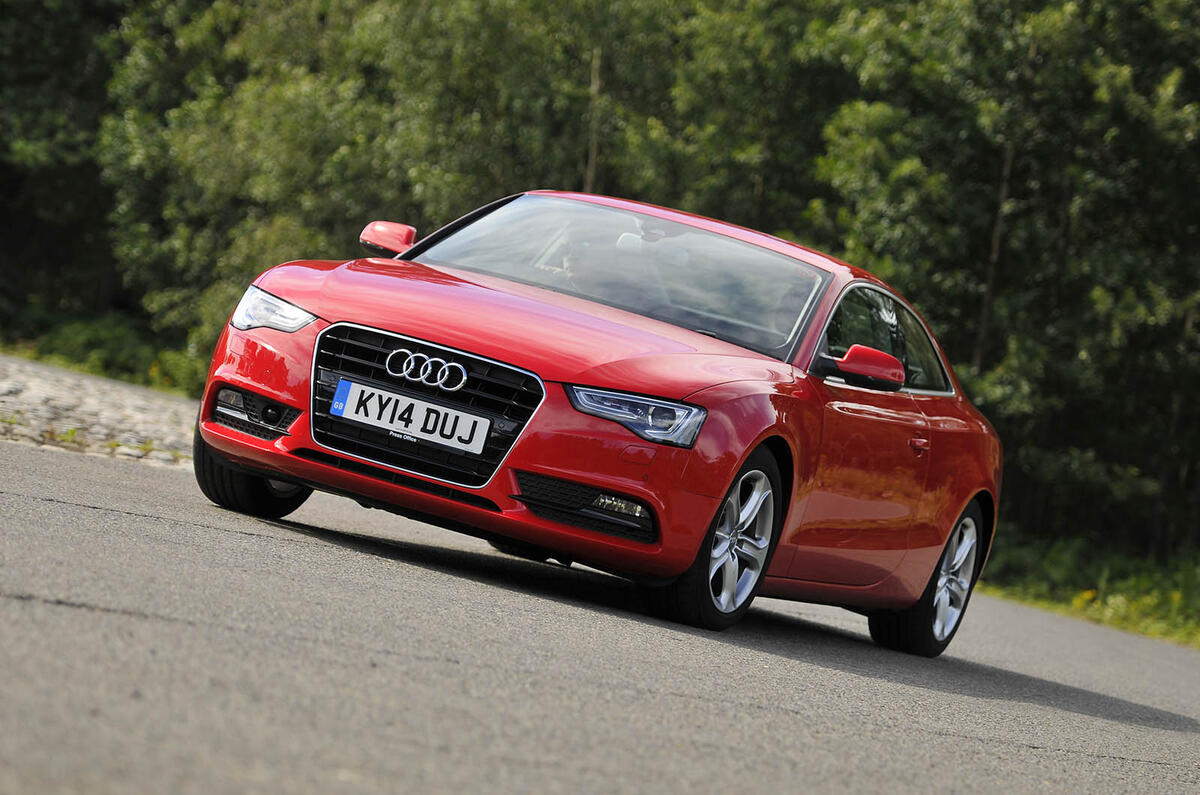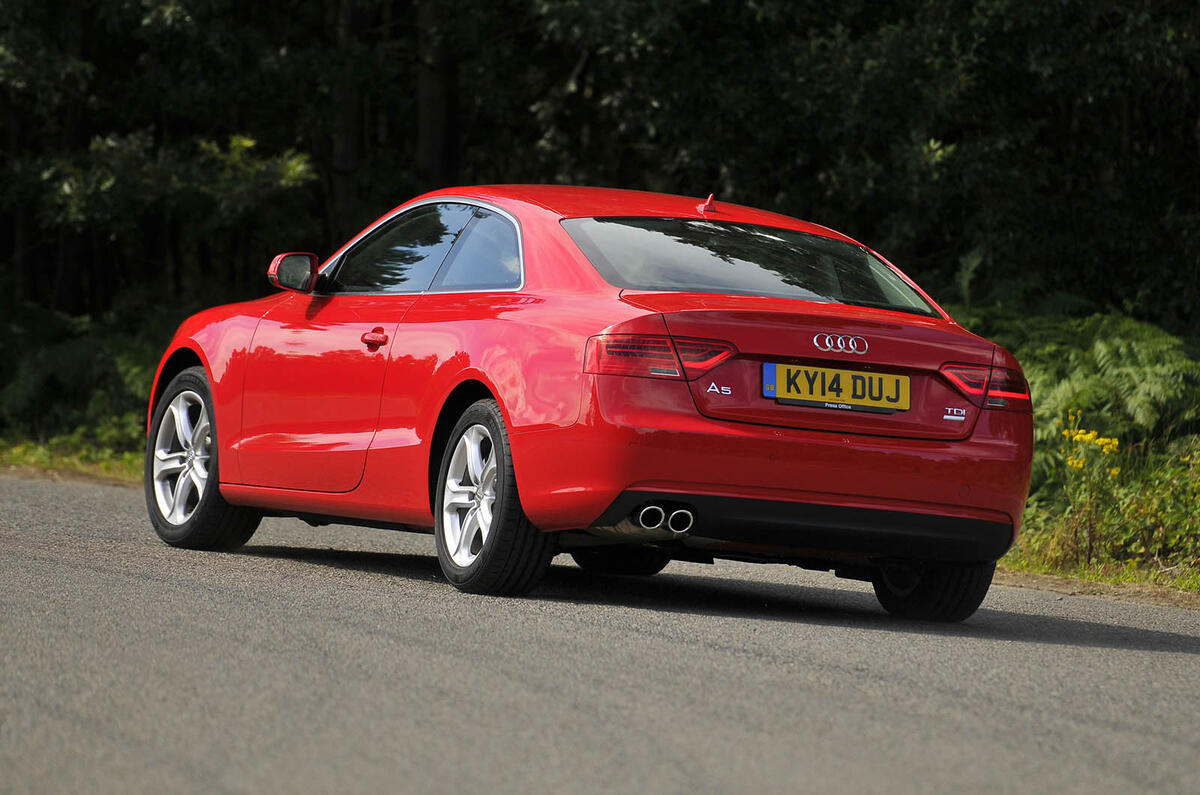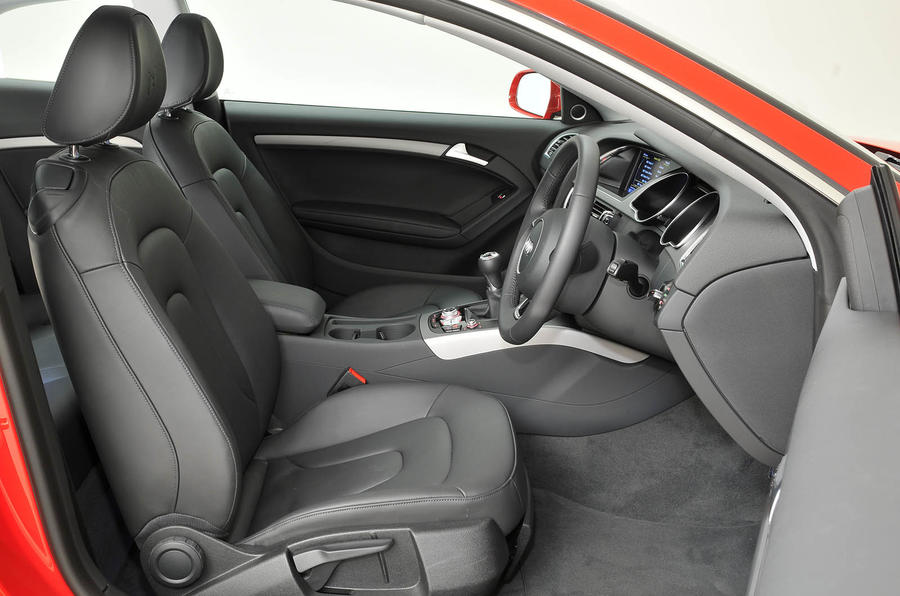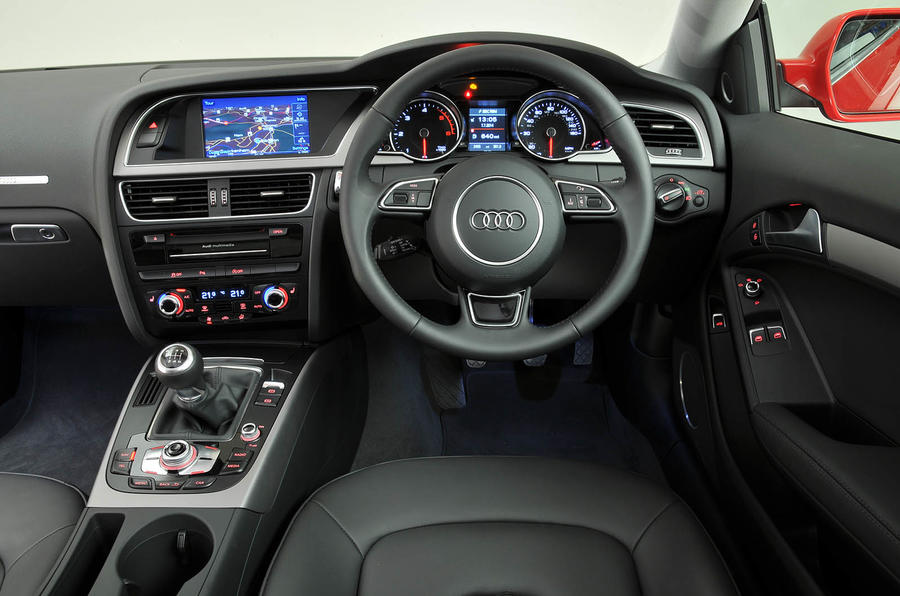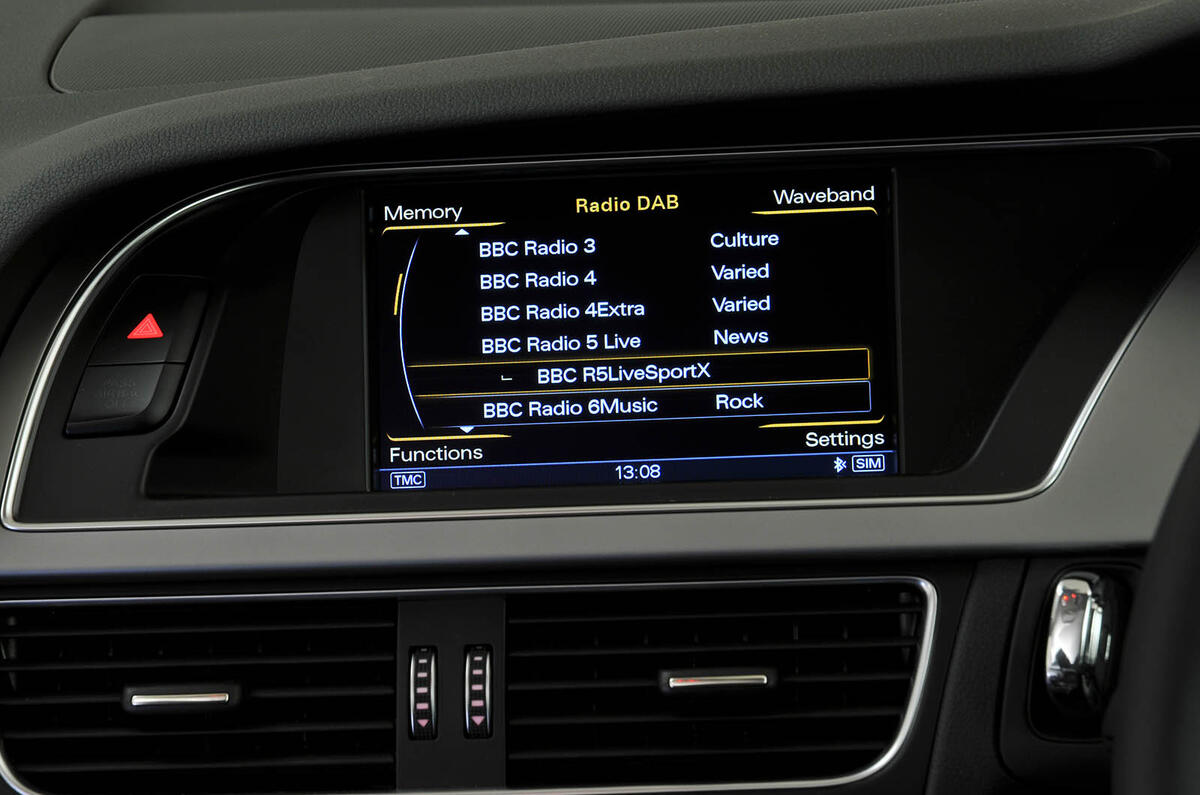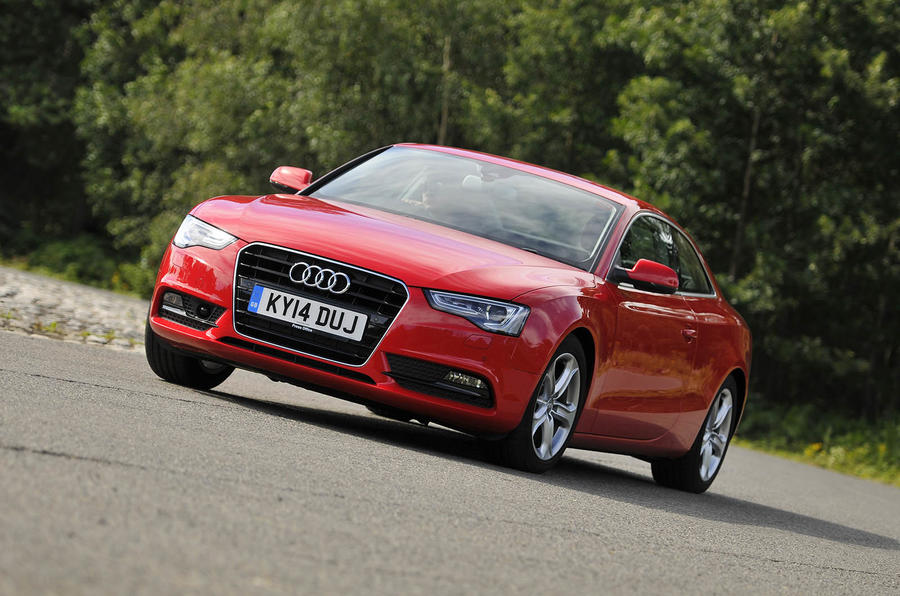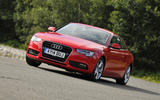The first pothole you take is enough to show that there’s been something of a revelation in Audi’s ride department at the time. The A5 coupé’s long wheelbase and improved weight distribution gives it an impressive secondary ride quality. The second discovery is the A5’s agility; the A5 is very eager to change direction.
The truth is that for all the A5’s advancements it still just trails the then BMW 3 Series in driver enjoyment terms if nothing else. Equally the A5’s ride quality was much better than we’ve come to expect from Audis of the period, but on the most demanding of B-roads the A5 can’t match the 3-series’ supple primary ride and taught body control.
As the A5 cabriolet shares all of its major suspension components with the A5 coupé, you would be justified in expecting the drop-top to put in a similarly composed dynamic performance. The problem, as so often in open-top cars, is torsional rigidity.
The body can be felt flexing over bumps and undulations, with noticeable scuttle shake manifesting itself as vibrations in the steering column and a trembling rear-view mirror. It’s a problem at low speeds in town and over uneven country lanes, and it’s bad enough to become the car’s defining dynamic characteristic on most surfaces.
Most frustrating in the bigger and heavier Sportback is a ride that sometimes manages to feel both inelastic and overdamped despite softenings of dampers and anti-roll bars. This, coupled to the A5’s dull reluctance to slice through tight bends, produces a chassis that falls well short of its BMW and Mercedes-Benz opposition.



